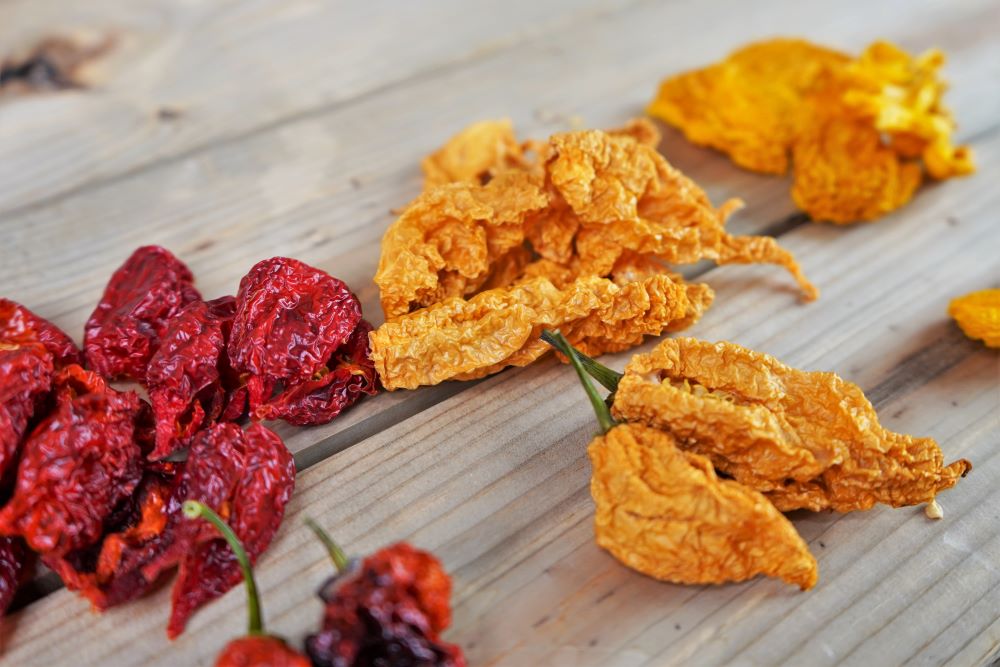Preserving peppers allows you to savor their vibrant flavors long after the growing season ends. Whether you’ve harvested an abundant crop or purchased them in bulk, employing effective preservation techniques ensures you can enjoy these versatile vegetables throughout the year. Here are five methods to preserve peppers:
Freezing
Freezing is one of the simplest methods to preserve peppers, maintaining their flavor and nutritional value.
- Preparation: Wash the peppers thoroughly. Remove stems, seeds, and membranes. Depending on your intended use, you can freeze them whole, halved, or chopped.
- Blanching (Optional): Blanching helps retain flavor and nutrients by stopping active enzymes that can break down the peppers under freezing conditions.
- Freezing: Spread the prepared peppers on a baking sheet in a single layer and freeze until solid. Once frozen, transfer them to airtight freezer bags or containers. This method prevents clumping, allowing you to use only the amount needed.
Frozen peppers are best used in cooked dishes, as they may lose their crispness upon thawing.
Drying
Drying peppers intensifies their flavor, making them a versatile ingredient for various recipes. You can dry peppers using an oven, dehydrator, or by air-drying.
- Oven Drying: Slice peppers into uniform pieces and place them on a baking sheet. Dry them in the oven at a low temperature until they become brittle.
- Dehydrator: Arrange pepper slices on dehydrator trays and process according to the manufacturer’s instructions until fully dried.
- Air-Drying: String whole peppers together and hang them in a well-ventilated area away from direct sunlight until they are completely dry.
Store dried peppers in moisture- and vapor-proof packaging in a cool, dry, dark place for several months.
Pickling
Pickling peppers adds a tangy flavor, making them a delightful addition to sandwiches, salads, and more.
- Preparation: Select fresh, firm peppers. Wash them thoroughly and, if desired, slice them into rings or strips.
- Brine: Prepare a pickling solution of vinegar, water, salt, and your choice of spices.
- Processing: Pack the peppers into sterilized jars, pour the hot brine over them, and seal. For long-term storage at room temperature, process the jars in a boiling water bath to prevent spoilage.
Properly pickled and processed peppers can be stored for an extended period, allowing you to enjoy their flavor long after the harvest.
Fermenting
Fermentation not only preserves peppers but also enhances their nutritional profile by promoting beneficial bacteria.
- Preparation: Clean and chop the peppers as desired.
- Brine: Create a saltwater solution to submerge the peppers, encouraging the growth of lactic acid bacteria.
- Fermentation: Place the peppers and brine in a fermentation vessel, ensuring the peppers remain submerged. Cover and let sit at room temperature for several days to weeks, depending on your taste preference.
Fermented peppers can be used in sauces, salsas, or as a spicy condiment.
Roasting and Storing in Oil
Roasting peppers imparts a smoky flavor, and storing them in oil preserves this taste for future use.
- Roasting: Char the peppers over an open flame or under a broiler until the skins blister. Place them in a covered bowl to steam, making it easier to peel off the skins.
- Storage: Layer the peeled peppers in a sterilized jar, adding salt and vinegar for preservation. Cover the peppers completely with oil.
Store the jars in the refrigerator and use within a few weeks. Always ensure the peppers remain submerged in oil to prevent spoilage.
By utilizing these preservation methods, you can extend the shelf life of your peppers and enjoy their diverse flavors throughout the year.
